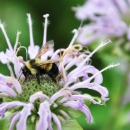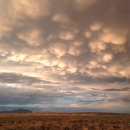Survey of Bombus (Hymenoptera: Apidae) and DNA barcoding of sagebrush sagebrush
The western United States’ sagebrush country encompasses over 175 million acres of public and private lands. The sagebrush landscape provides many benefits to our rural economies and communities, and it serves as crucial habitat for a diversity of wildlife, including the iconic greater sage-grouse and over 350 other species.
Learn more about sagebrush biome wild bees in Southeast Oregon
Funding Year | Amount | Location |
FY23 | $57,000 | Harney and Malheur County, Oregon |
Project Description
This project will generate species and community data for bumble bees throughout the high desert in Southeast Oregon where historical community baselines have not been established and contemporary species occurrence data is sparse. Species of wild, unmanaged bees from the sagebrush biome will be DNA barcoded to enhance available reference material for the Oregon Bee Project partners and generate species occurrence data for these specialized pollinators.
Partners
Oregon State University



